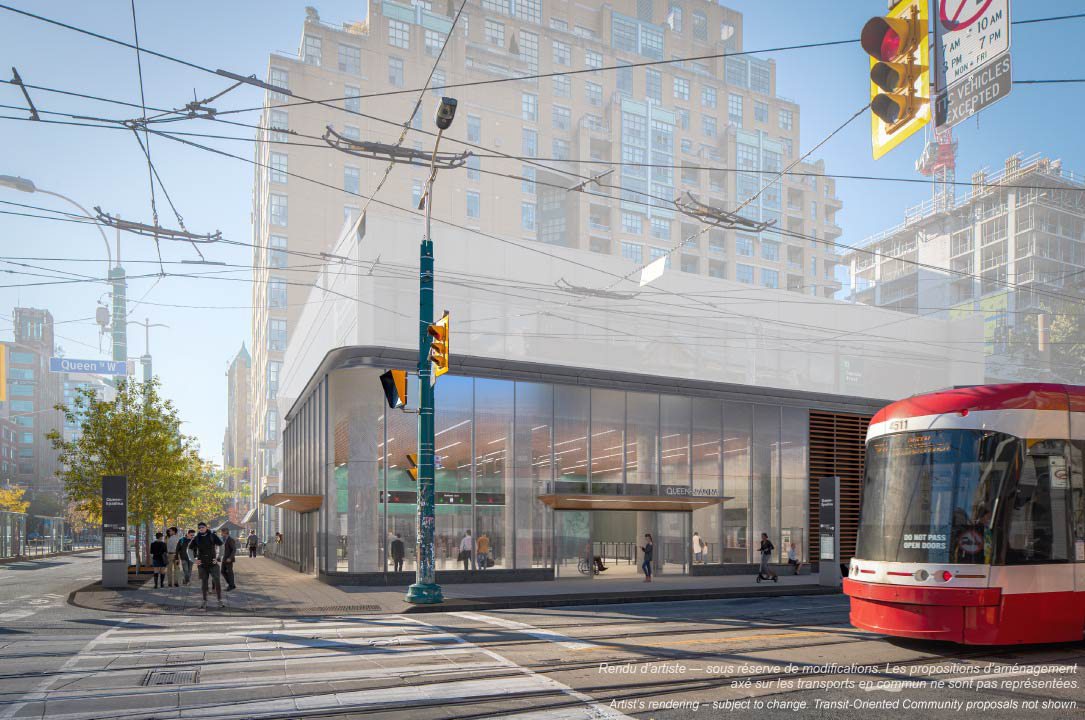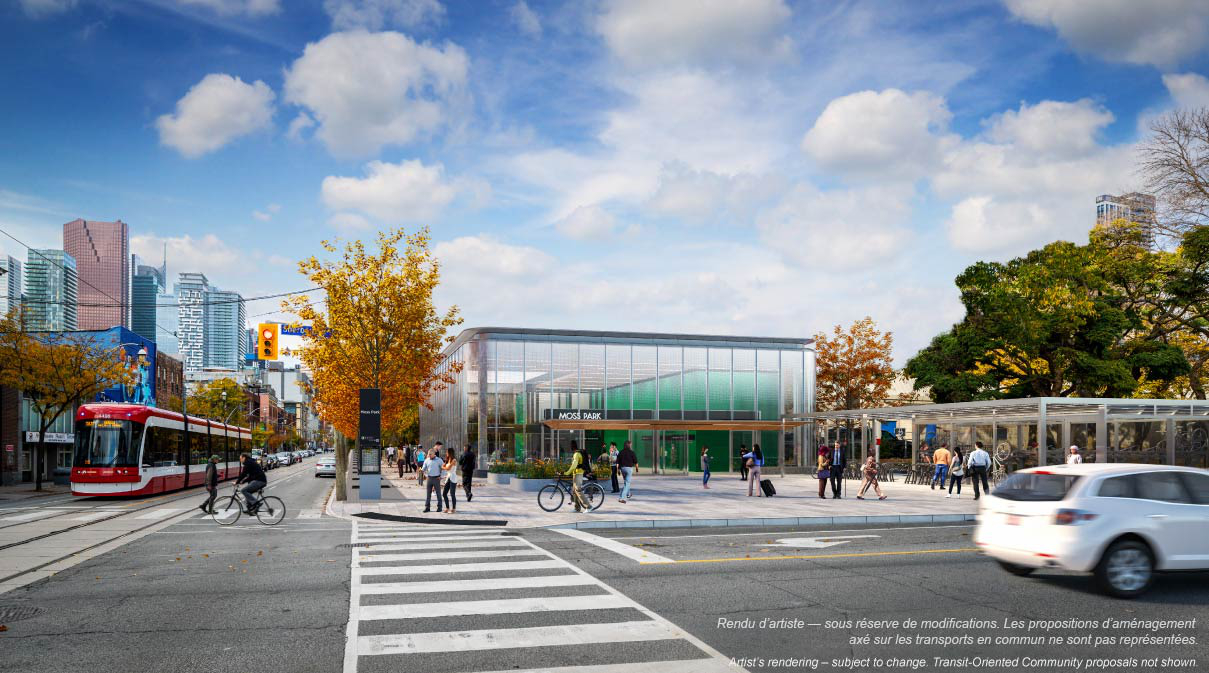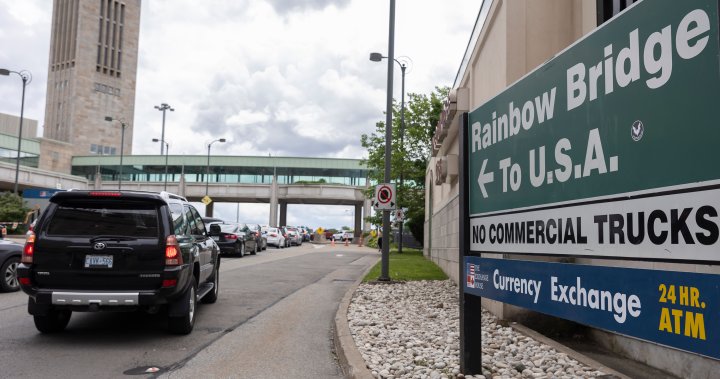Infra
Canada: Ground Breaks on New Ontario Line Stations

The Ontario government has broken ground on building three new stations for the Ontario Line in the Greater Toronto Area.
The new stations at King-Bathurst, Queen-Spadina and Moss Park will help create a reliable and continuous transit line.
Future Ontario Line station building at the southwest corner of Queen Street West and Spadina Avenue
© Ontario
Construction will focus on removing soil and bedrock from the sites, creating the stations at a depth of 30 to 40 metres. Ultimately, the stations will be equipped with elevators and escalators to connect the subways to the street.
This work prepares for the future tunnel boring machines (TBMs) that will create tunnels through the downtown segment of the Ontario Line, connecting to each underground station.
“Under the leadership of Premier Ford, our government is one step closer to delivering a world-class transit system for the GTA. The stations we’re breaking ground on today will help tackle gridlock, reduce commute times and connect tens of thousands of commuters to homes and good-paying jobs each and every day.”
During morning rush hour, King-Bathurst Station is expected to serve over 5,000 commuters. This stop will create crucial connections between the Ontario Line and popular streetcar routes.
Meanwhile, Queen-Spadina and Moss Park stations are each expected to serve over 7,000 commuters and facilitate over 5,000 transfers during the morning rush hour.

Future Ontario Line station building at Moss Park, looking west
© Ontario
Thanks to these connections, the Ontario Line is projected to reduce crowding on Line 1 (Yonge-University) by 15 percent and at Union Station by 14 percent.
“Getting shovels in the ground at these future stations highlights the incredible progress our government is making towards delivering the largest subway expansion in our country’s history. We are not only building faster and more seamless transit, we’re also seizing this unique opportunity to create vibrant, mixed-use communities all along the Ontario Line. Our planned transit-oriented communities, such as at the future King-Bathurst and Queen-Spadina Stations, will bring more jobs, housing, including affordable units, and retail closer to transit, strengthening the character and liveliness of Toronto’s downtown core.”
Upon completion, the Ontario Line will span 15.6 kilometres and will serve 15 stations. It will run from Exhibition Place through the downtown core to the Eglinton Crosstown LRT.
The line will offer more than 40 connections to other subway, bus, streetcar and regional train services, bringing 227,500 more people within walking distance of transit and reducing daily car trips by at least 28,000.
By 2041, the Ontario Line is expected to reduce greenhouse gas emissions by 14,000 tonnes annually and cut overall fuel consumption by more than seven million litres a year.
“Starting excavation means we are making significant strides in bringing the Ontario Line to life and giving people more ways to take transit. These three stations alone will put subway service within walking distance for more than 70,000 downtown residents.”










